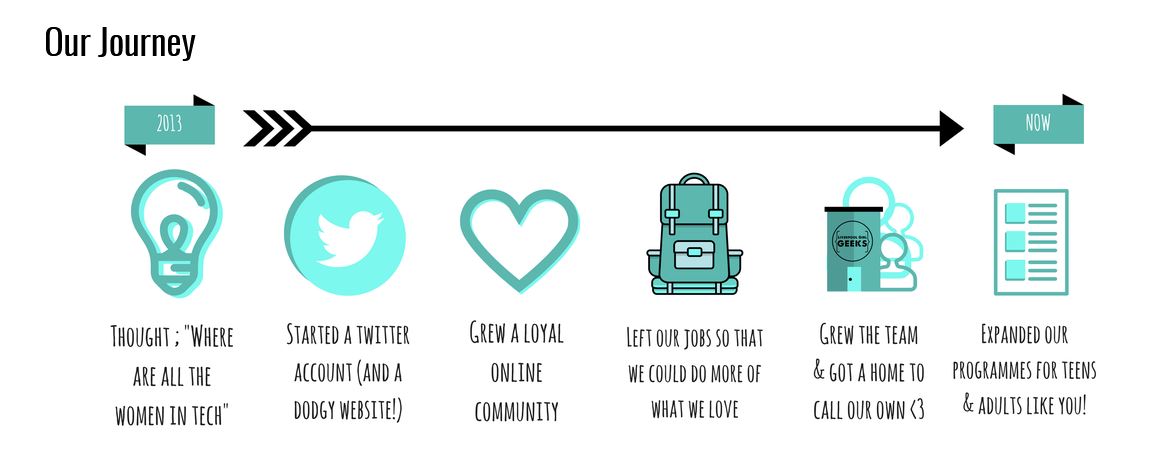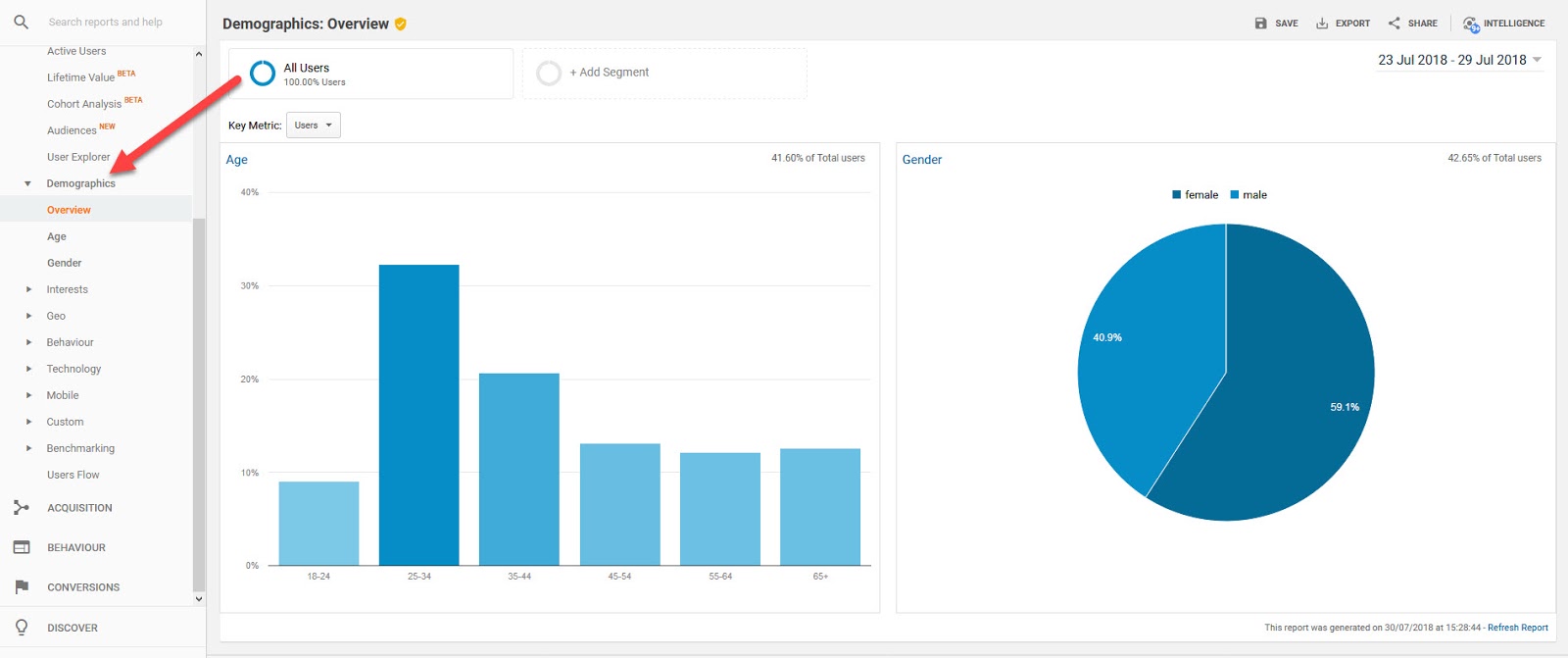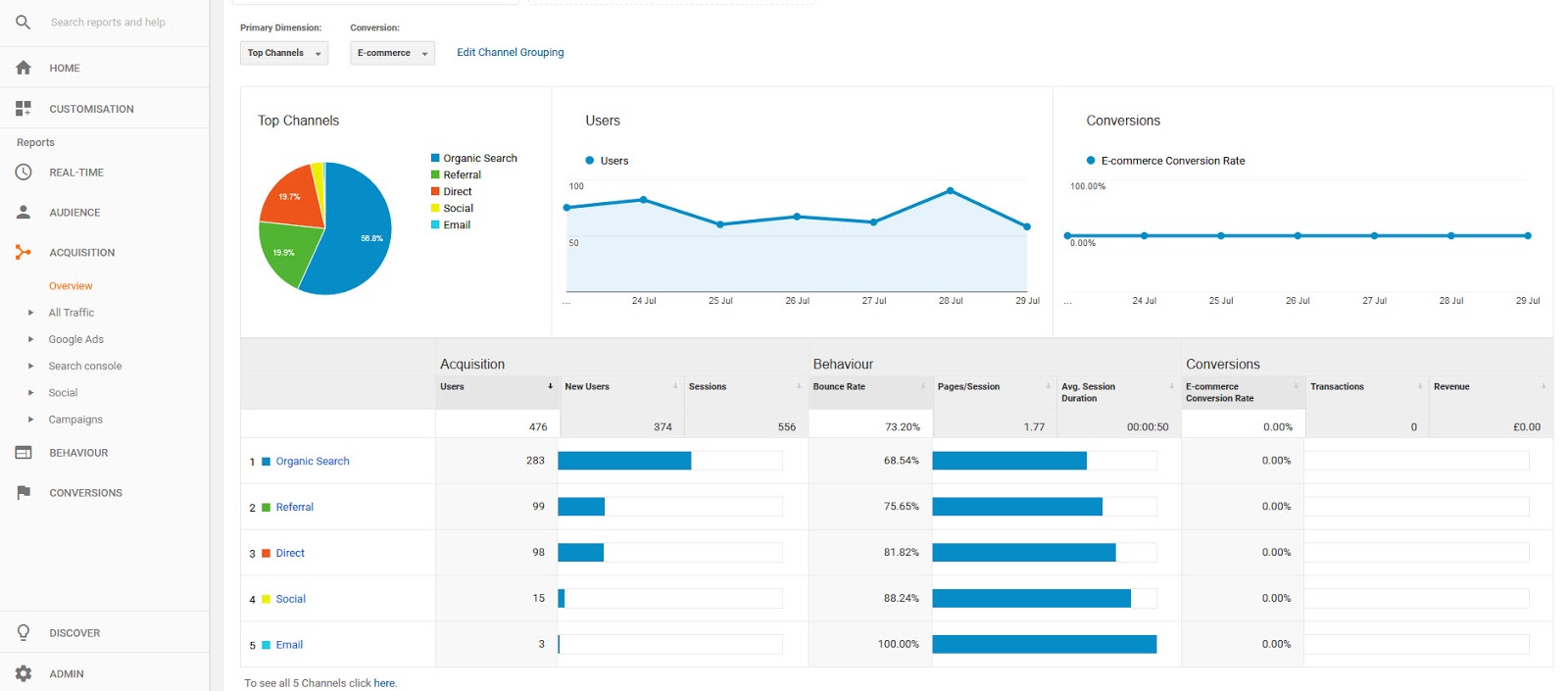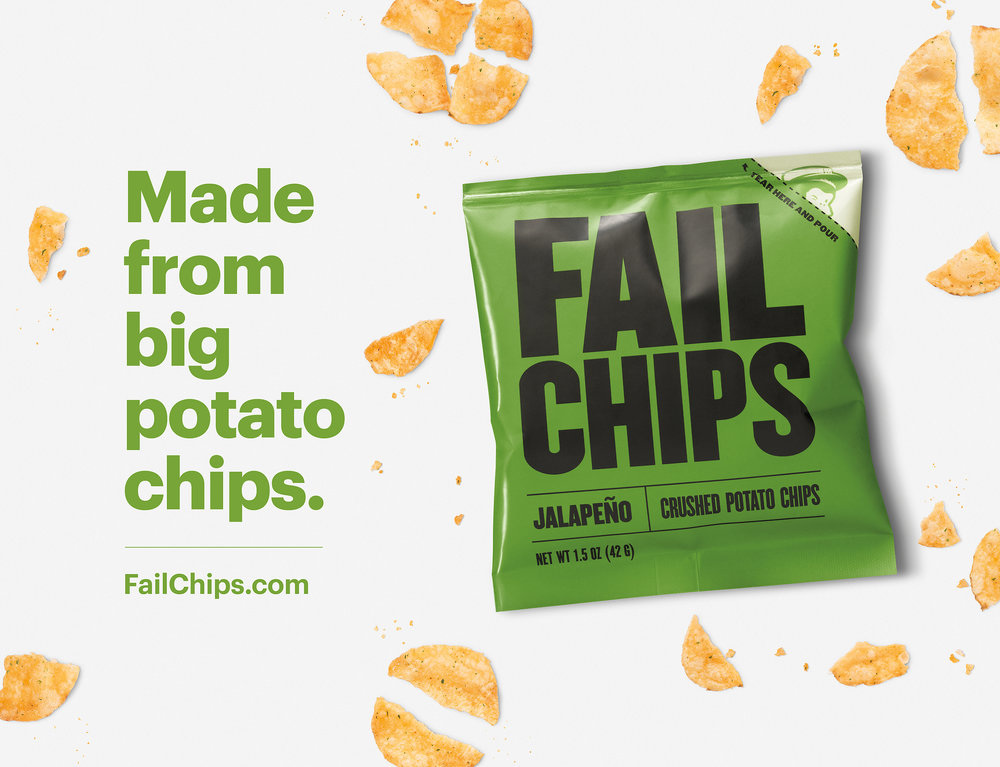Girl Geeks at the AMA: Learning How to Engage with Younger Audiences

This was my first year at the AMA conference, and what a fantastic introduction to this yearly event in my hometown of Liverpool! One theme from this year really struck a chord with me: the importance of diversity and the next generation. In this post, I am going to talk a little bit about one of the most interesting sessions I attended: How to Talk to Young People, given by Chelsea Slater from the Liverpool Girl Geeks. Engaging with the younger generation is essential if we want to continue to grow our audience, so I’d like to take a look into the content of the session in a bit more detail.
The Liverpool Girl Geeks were founded in 2013 by three amazing women who questioned ‘Where were all the women in tech?’ This thought was the genesis of a Twitter account which grew into a large, active online community, eventually letting Rebecca, Chelsea and Jo leave their jobs to focus entirely on the Girl Geeks. Today they are a thriving team working with women and young people teaching them that working in technology is an absolutely reachable goal, and giving them the skills to get there.
Astoundingly, as Chelsea noted in her talk, by 2040 it is estimated that only 1% of the tech sector will be female if there are no interventions. If we were to close the gender gap it would be worth an estimated £600 billion to the UK. Liverpool Girl Geeks are on a mission to change this by creating positive interventions such as events, courses, and workshops to inspire women and girls of all ages. They want to celebrate and showcase role models within the tech sector.

Through their work, Chelsea and the team at Liverpool Girl Geeks they have gain tremendous insight into the most important generation for marketers - Generation Z.
Born between roughly 1995 and 2015, Generation Z has grown up as digital natives; they have never known a time before the digital age. The oldest cohort of this group are just beginning their adult lives, and are our next generation of Theatregoers, venue hirers, promoters, and marketers. Let’s take some facts about look Generation Z:
Who is Generation Z?
-
3 - 23 years old (note that what we understand about Generation Z comes from the older members of this group)
-
They are very politically driven
-
They have been exposed to an unprecedented amount of technology, According to U.S. consultants Sparks and Honey in 2014, 41% of Generation Z spend more than three hours per day using computers for purposes other than schoolwork, compared with 22% in 2004.
-
Genderfluid and have a live and let live attitude
-
Higher Risk of Mental Illness
-
Self identify as being loyal, compassionate, thoughtful, open-minded, responsible, and determined.
What do they want?
-
Brands that cater to the individual.
-
Favor brands that are “real” and present an honest open side of themselves.
-
Suggestive Advertisement - In this digital age we live in all of our activity online can tailor the adverts we see, Like on Netflix when you watch a certain film or show and then you see “you may also like…”
-
Look to Instagram and Youtube for the role models. (side fact - 10 hours of time spent on Social Media can increase your risk of anxiety and depression by 34%).
-
They will choose jobs based on a positive and flexible work environment over high salary.
-
Spend 24% of their money on food - they care about the food they eat and we have seen a massive increase in veganism and gluten-free living.
This is just a small overview of Generation Z and of course, our picture of who they are and what they will value will change as the youngest members of this group grow up, but there is still a great opportunity to start engaging with younger audiences now.
Get to know your audience.
Google Analytics is a great tool for helping you get to know your audiences. The Demographics section will give you an overview of the ages and genders that are visiting your site on a weekly basis. As you can see below, this would tell us that 32.32% of people visiting the site would be between 25 and 34 but only 9.09% of people visiting the site are between the ages of 18 and 24. There is a lot of room for growth here, and a new audience to foster.

Another great feature is the Acquisition section. From here you can see where your customers are coming from; whether it’s from social media or an organic search this information will highlight the areas you need to target for campaigns and advertising. The information shown below would highlight that I needed to work on targeted social media posts to improve in that area.

Do Your Research
The third critical piece to our Generation Z puzzle is market research. It helps you to understand what your audiences want and is a great opportunity to get to know your younger audience. Personally, I’ve always found that being face to face in a room with other people helps you to gauge how they really feel. Below are some ideas on how to gather market research.
-
Face to Face Focus Groups - Gather a group of your target audience and have a brainstorming session with them. Basically, ask them what they would like to see from your venue and why. You will get a great insight into what they want - even by just looking at their facial expressions! Be sure to keep the questions open-ended, but be ready to redirect the conversation if you need to. Generation Z is not afraid of face-to-face chats and is happy to share their opinions, so this is a great choice for market research with them.
-
Mailchimp campaigns, online surveys - You can create surveys through websites such as SurveyMonkey which are designed to get clear market research from your audiences. Once you have created this survey you can design a MailChimp campaign around it and use Your Reports in Ticketsolve to segment your key audience. https://www.surveymonkey.com/. Being digital natives, online surveys are a no-brainer for Generation Z.
Some Tips for Talking to Generation Z
Keep in mind that some of Generation Z’s attitudes are actually quite conservative (they are not big into partying or drinking), their beliefs are quite liberal, especially when it comes to identity, gender, race, and sexuality. They are socially and technologically empowered, and fiercely independent and entrepreneurial. This means messages must change from “we can get you there” to “ we can help you get yourself there.”
Another key to Generation Z is how they use technology. For example, for them, Facebook is not a channel for sharing but rather an informational hub. Snapchat, by contrast, is the real-life platform, where teens share what they’re up to privately with select friend groups. Instagram, meanwhile is the aspirational platform, where teens post only carefully groomed imagery of themselves.
-
Instagram is the most popular app for brand discovery with 45 percent of teens using it to find cool new products
-
Facebook comes in at 40 percent.
-
And before making a purchase? Gen Zers are two times more likely than Millennials to turn to YouTube.
-
Gen Z girls are more likely to be on platforms such as Instagram, Facebook, Snapchat, Pinterest and Tumblr, Gen Z boys are more inclined to spend time on Twitch, TV, and Reddit.
-
They are multitaskers, so think multiplatform when creating campaigns. Video on mobile versus desktop etc.
-
They are very mobile-driven so make sure you are mobile optimised.
-
They are very visual (think memes and emojis) and have short attention spans so be sure to use plenty of video in your campaigns and keep it tight.

Be Creative
The most important thing to remember is to have fun and be creative when your thinking about campaigns, design and your brand. Get your marketing team together with the results from your market research and discuss how you are going to approach “the next generation”. Be innovative, experiment and make your message clear.
In a great example of having fun with marketing strategies to build awareness of their brand, Mailchimp realised that many people mispronounced their name. They embarked on a memorable and funny campaign centered around these mispronunciations, which included Kalelimp, Jailblimp and Sailgimp. The result of this meant that whenever someone searched Google for these names it directed them to Mailchimp’s website.
Lastly, and this was an interesting one, was another theme at the AMA around the power of play. This idea really links well into how we think about Gen Z. The next generation of tech-savvy, socially conscious and politically engaged audiences will respond best to marketing that isn’t too earnest or self-conscious, but takes a more creative and open-ended approach. Ticketsolve can help you make the most of this marketing through powerful integration with Google Analytics and Mailchimp, so next time you’re starting a campaign, don’t forget about the Power of Play - or Gen Z!

Categories
Recent posts
Archive
- December 2025 (2)
- November 2025 (1)
- October 2025 (3)
- September 2025 (1)
- August 2025 (3)
- July 2025 (3)
- June 2025 (3)
- May 2025 (4)
- April 2025 (5)
- March 2025 (5)
- February 2025 (4)
- January 2025 (4)
- December 2024 (3)
- November 2024 (5)
- October 2024 (4)
- September 2024 (7)
- August 2024 (5)
- July 2024 (3)
- June 2024 (3)
- May 2024 (3)
- April 2024 (3)
- March 2024 (4)
- February 2024 (5)
- January 2024 (3)
- December 2023 (3)
- November 2023 (4)
- October 2023 (4)
- September 2023 (5)
- August 2023 (3)
- July 2023 (4)
- June 2023 (4)
- May 2023 (5)
- April 2023 (4)
- March 2023 (4)
- February 2023 (5)
- January 2023 (4)
- December 2022 (4)
- November 2022 (3)
- October 2022 (4)
- September 2022 (5)
- August 2022 (2)
- July 2022 (4)
- June 2022 (5)
- May 2022 (4)
- April 2022 (5)
- March 2022 (3)
- February 2022 (4)
- January 2022 (4)
- December 2021 (2)
- November 2021 (3)
- October 2021 (5)
- September 2021 (4)
- August 2021 (4)
- July 2021 (3)
- June 2021 (4)
- May 2021 (2)
- April 2021 (4)
- March 2021 (5)
- February 2021 (4)
- January 2021 (5)
- December 2020 (4)
- November 2020 (4)
- October 2020 (5)
- September 2020 (5)
- August 2020 (4)
- July 2020 (7)
- June 2020 (5)
- May 2020 (5)
- April 2020 (5)
- March 2020 (8)
- February 2020 (4)
- January 2020 (5)
- December 2019 (3)
- November 2019 (5)
- October 2019 (4)
- September 2019 (4)
- August 2019 (5)
- July 2019 (4)
- June 2019 (4)
- May 2019 (5)
- April 2019 (4)
- March 2019 (4)
- February 2019 (3)
- January 2019 (5)
- December 2018 (4)
- November 2018 (8)
- October 2018 (2)
- September 2018 (3)
- August 2018 (5)
- July 2018 (4)
- June 2018 (4)
- May 2018 (1)
- April 2018 (1)
- March 2018 (3)
- February 2018 (2)
- December 2017 (2)
- November 2017 (3)
- October 2017 (4)
- September 2017 (2)
- August 2017 (1)
- July 2017 (5)
- June 2017 (3)
- May 2017 (2)
- April 2017 (3)
- March 2017 (2)
- February 2017 (3)
- January 2017 (3)
- December 2016 (4)
- November 2016 (1)
- September 2016 (1)
- July 2016 (3)
- June 2016 (1)
- May 2016 (2)
- April 2016 (2)
- February 2016 (1)
- January 2016 (3)
- December 2015 (2)
- September 2015 (1)
- August 2015 (2)
- July 2015 (1)
- June 2015 (2)
- May 2015 (2)
- April 2015 (5)
- March 2015 (2)
- February 2015 (2)
- January 2015 (4)
- December 2014 (3)
- November 2014 (3)
- October 2014 (2)
- September 2014 (3)
- August 2014 (3)
- July 2014 (3)
- June 2014 (7)
- May 2014 (6)
- April 2014 (3)
- March 2014 (2)
- February 2014 (1)
- January 2014 (3)
- December 2013 (1)
- August 2013 (1)
- June 2013 (1)
- April 2013 (1)
Sign up for regular updates

